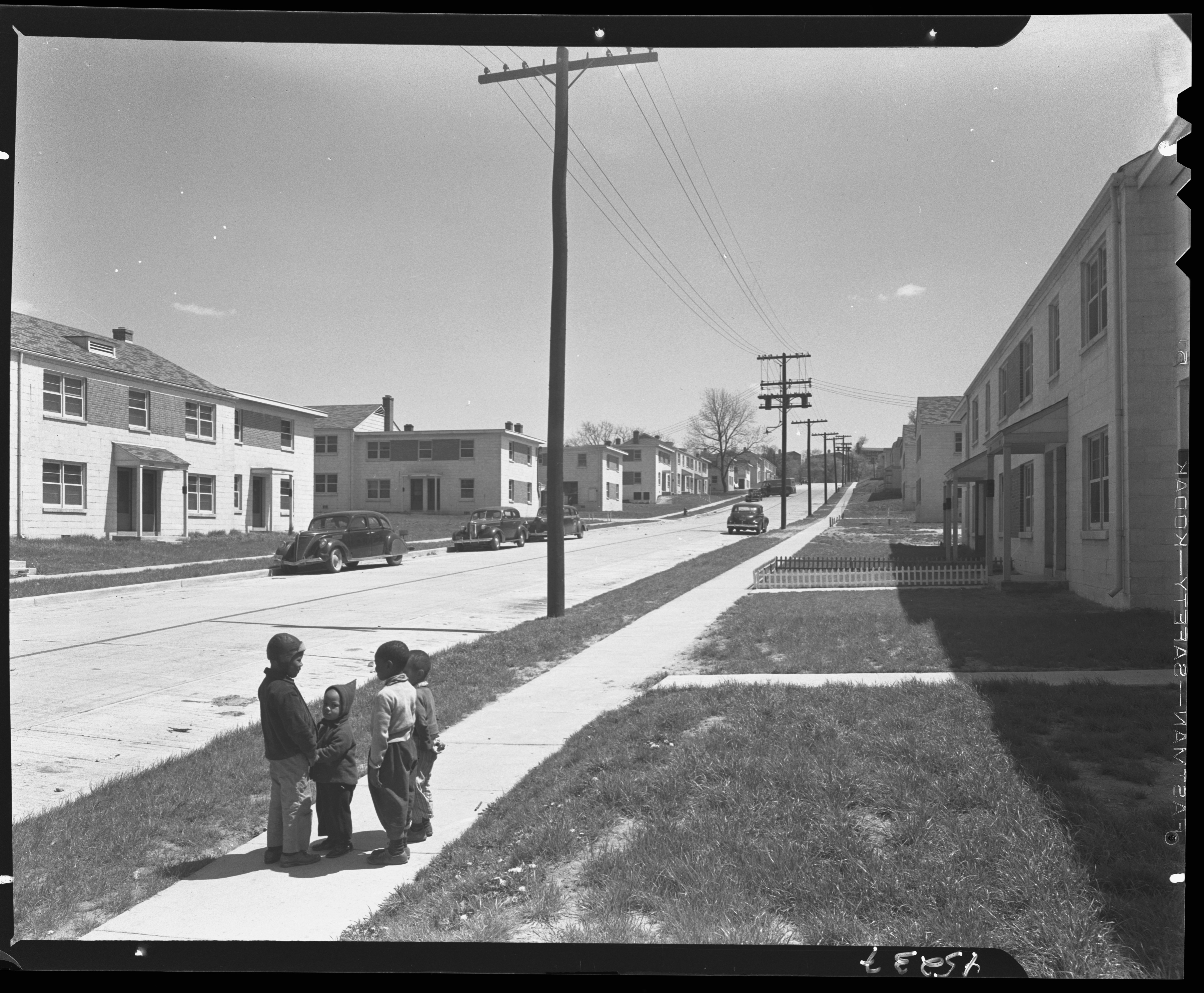Entertainer Eartha Kitt (pictured with President Lyndon B. Johnson at the White House in January 1968) was a supporter and honorary member of the Rebels with a Cause. After witnessing the appalling living conditions in Barry Farm–Hillsdale, Kitt spoke at a rally given by the Rebels.
Anacostia Community Museum Presents “We Shall Not Be Moved: Stories of Struggle from Barry Farm-Hillsdale”

Children outside Barry Farm Dwellings, April 28, 1944. Courtesy Library of Congress, Prints and Photographs Division (LC-G613-45237)
As part of a yearlong focus on housing equity and justice in Washington, D.C., the Smithsonian’s Anacostia Community Museum will present the online exhibition, “We Shall Not Be Moved: Stories of Struggle from Barry Farm-Hillsdale.” Available online beginning April 4, “We Shall Not Be Moved” asks virtual visitors to investigate housing equity in Washington through the lens of the historic neighborhood Barry Farm-Hillsdale. The exhibition features diverse stories of the people and places that made up the neighborhood, and it challenges visitors to think about how and why a vibrant, strong community can disappear. “We Shall Not Be Moved” challenges visitors to think about the stories they encounter in the exhibition and identify similarities to other communities that have been destroyed across the U.S.
“This online exhibition reflects the museum’s continuing effort to uplift the stories of diverse communities in the region and show their challenges and their triumphs,” said Melanie Adams, director of the Anacostia Community Museum. “Specifically, the Barry Farm-Hillsdale neighborhood was made up of African American activists, business owners and was even home to the first African American employee at the Smithsonian, Solomon Brown. These are more than stories about housing, they are also stories of the loss of community and how that loss continues to impact us today.”
Created for the settlement of African Americans after the Civil War, the Barry Farm-Hillsdale community was a self-contained, 375-acre site in Washington’s Anacostia neighborhood. Barry Farm-Hillsdale was once a strong, cohesive African American community that pioneered building schools, churches and civic organizations. The community thrived into the early 20th century. It no longer exists.
Through a series of maps, historic photos and oral-history excerpts, the interactive exhibition asks visitors to investigate what happened to the historic community of Barry Farm-Hillsdale. They will weigh how factors in community change—such as eminent domain, new housing opportunities in other neighborhoods, rezoning and gentrification—affected those living in Barry Farm-Hillsdale. By better understanding how race-based policies affect the lives of historically marginalized peoples, visitors learn to question what is happening in their own neighborhoods and how to make housing more equitable.
The exhibitions is curated by Alcione Amos, whose book Barry Farm-Hillsdale in Anacostia: A Historic African American Community inspired the exhibition.
“The stories of the historic community of Barry Farm-Hillsdale deal with activism and solidarity and how important these are for the survival of communities,” Amos said. “The exhibition inspires visitors to actively improve the life of their neighborhood and protect their communities from disappearing in the process.”
Visitors can interact with the virtual exhibition starting April 4. It will be available online throughout 2022.
“We Shall Not Be Moved” is part of “Our Housing, Our Future,” the museum’s yearlong focus on housing equity and justice in Washington.
About “Our Housing, Our Future”
In 2022, the Anacostia Community Museum will examine themes of housing and how racial inequality plays out in the lives of everyday people in Washington. Titled “Our Housing, Our Future,” this year’s theme brings the stories of people subjected to housing inequity to light. Through the lens of Washington’s Barry Farm-Hillsdale and Southwest neighborhoods, visitors are encouraged to think critically about what makes a cohesive community, question how and why communities disappear and envision how people can build a more equitable future. The yearlong program includes in-person and digital exhibitions, community programs and educational partnerships.
About the Museum
Founded in 1967, the Smithsonian’s Anacostia Community Museum shares the untold and often overlooked stories of communities furthest from justice in the greater Washington, D.C., region. In celebrating stories of resiliency, joy and strength, the museum inspires those who visit to translate their ideas into action. For more information about the museum, visit anacostia.si.edu or follow the museum on Twitter, Facebook and Instagram.
# # #
SI-102-2022




